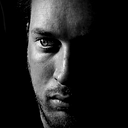Member-only story
Photography
Camera metering — an over-simplification
A look at how digital cameras meter a scene in order to suggest the exposure values when using auto or semi-auto modes.
Have you ever wondered how, from a technical point of view, your camera meters a scene and suggests what it thinks is the best exposure settings to correctly expose a photo?
I’m going to try to offer a simple explanation without getting too technical in the hopes it might help you understand what the camera is going to do… but more importantly, know when it’s going to be wrong.
The basic premise
The basic premise that is built into cameras in order for them to judge the required settings to correctly exposure a given scene works by taking the scene, converting it to monochrome and applying a heavy blur.
In the monochrome image, a “correct” exposure is considered to be “middle gray”. If we understand that in a monochrome image, a black pixel will be 0 and a pure white pixel will be 255. Middle gray is right in the middle of those at 128.
Once the camera has a blurry monochrome image of the scene, it then applies the chosen metering mode to analyze this data and work out the exposure settings to…
